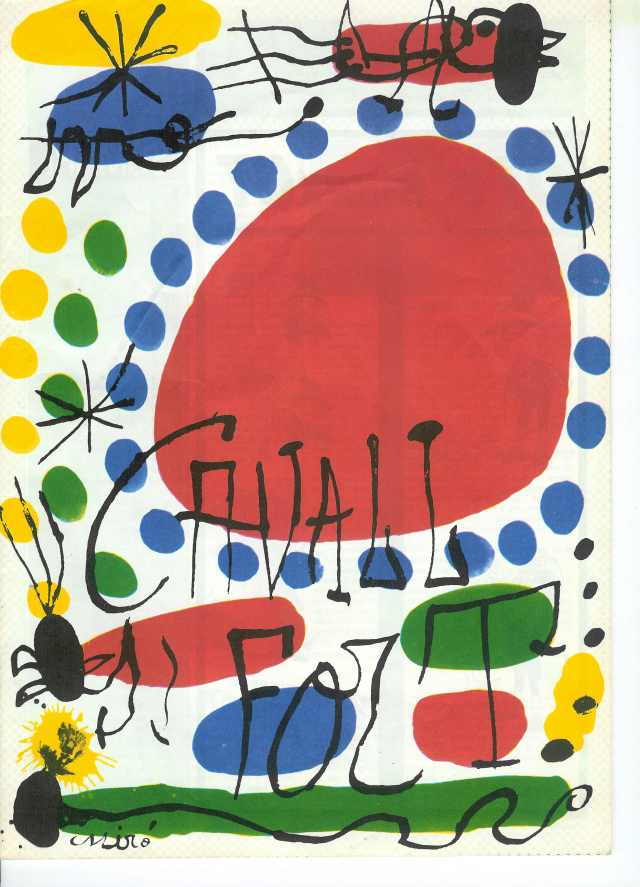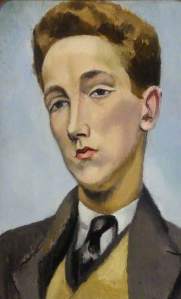About 1928, Huge Moreland and Ralph Barnby talk about art when they meet at the Mortimer [CCR 30-31]. Moreland said of Barnby: “I can see Ralph has talent…but why use combinations of colour that make you think he is a Frenchman or Catalan?”
Moreland is based on Powell’s close friend, the composer Constant Lambert. Like Moreland, “Lambert loved discussing painters, Böcklin to Braque, Breughel to Brangwyn,…” [TKBR 147]. Powell wrote: “If I have been skillful enough to pass on any echo of Lambert’s incomparable wit, then Moreland is like him;” [TKBR 148] However, Powell also says that although Moreland and Lambert share Bronzino-like features, they are far from identical.

Susan
Adrian Daintrey
oil on canvas, 22 x 19 in
given to the Leeds Art Gallery by Sir J Duveen, 1927
© the artist’s estate
photo credit: Leeds Museums and Galleries
from BBC Your Paintings
We have already mentioned that many of Barnby’s characteristics are similar to those of another good friend of Powell, Adrian Daintrey (1902-1988). Daintrey’s first major exhibition was in 1928. His modern heroes were Utrillo, Manet, Derain, and Matisse. As this portrait Susan shows, he did not hesitate to use bright colors.
We are guessing that Moreland was thinking of the Frenchman Matisse and the Catalan Miro. When Moreland chides Barnby about his colors, he may be echoing Lambert’s anger about Miro, who was asked to paint the sets for a ballet that Lambert was writing, while Lambert favored his friend Chistopher Wood for the job. [TKBR 146-147]

Illustration for Cavall Fort, a children’s magazine in Catalan, Joan Miro, photo by Mireia Tremoleda [Public domain], via Wikimedia Commons
![Woman with a Hat Henri Matisse, 1905 oil on canvas, 31 x 24 in San Francisco Museum of Art, ©Succession H. Matisse, Paris / Artist Rights Society (ARS), New York.[1] photo from Wikipedia.org, public domain in US](https://picturesinpowell.files.wordpress.com/2014/10/matisse-woman-with-a-hat.jpg?w=220&h=300)
Woman with a Hat
Henri Matisse, 1905
oil on canvas, 31 x 24 in
San Francisco Museum of Art, ©Succession H. Matisse, Paris / Artist Rights Society (ARS), New York.
photo from Wikipedia.org, public domain in US
Barnby sits down and says he has just been to see ‘the London group;’ he and Moreland proceed to discuss English and, later, Parisian painting.

Rupert Doone , Dancer
Nina Hamnett, 1922-1923
oil on canvas, 18 x 12 in
Doncaster Museum and Art Gallery
© the artist’s estate / Bridgeman Images
photo credit: Doncaster Museum Service from BBC Your Paintings
The London Group was organized in 1913 by artists, such as the Camden Town Group and the English Cubists, who rebelled against the Royal Academy. The organization is now over a century old, with a constitution and officers, and continues to encourage and exhibit young artists. In their early years, they were champions of Post-Impressionism in Britain. In April and May, 1928 they presented The London Group Retrospective Exhibition at the New Burlington Galleries. A few copies of the exhibit catalog, written by Roger Fry and others, still exist. A number of the London Group artists who showed in that exhibition, such as Epstein, Sickert, Lewis, and John, are mentioned in Dance and have appeared or will appear elsewhere in our blog.
Nina Hamnett showed a Head of Rupert Doone in the London Group Retrospective of 1928. We have chosen to show her work as an example of what Barnby saw because she also did a portrait of Powell and introduced him to her next door neighbor, Adrain Daintrey (TKBR 137). The details of her bohemian adventures in the artistic milieus of Paris and London are beyond our scope but are accessible in her memoir Laughing Torso (1932).